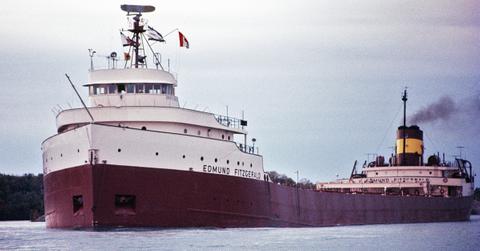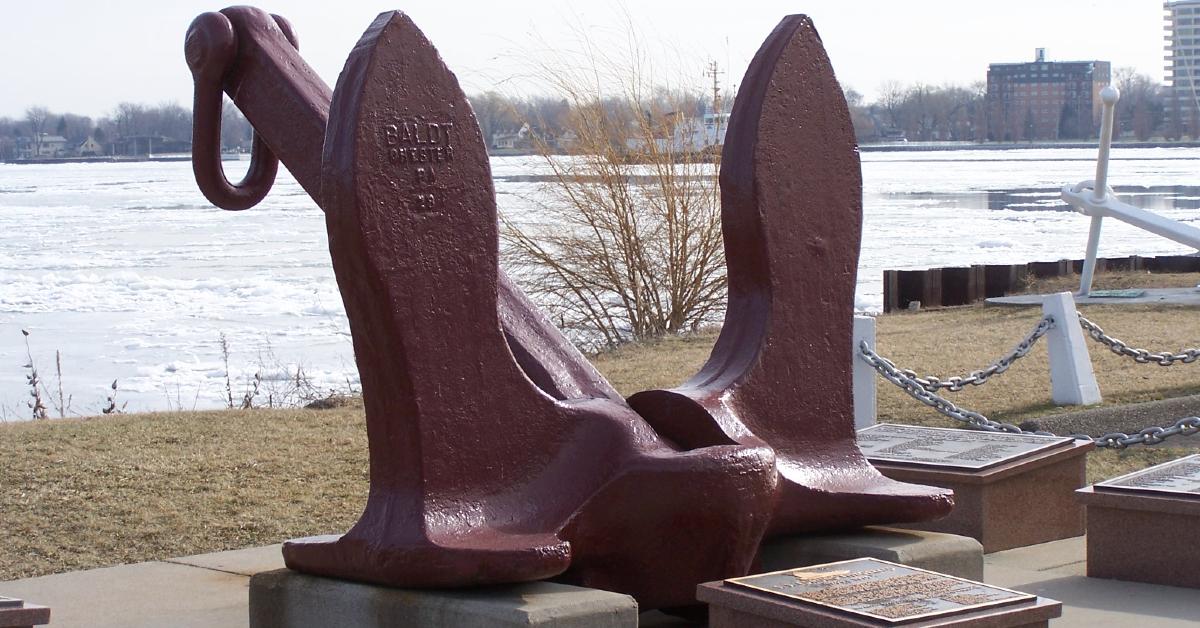“I Have Sustained Some Topside Damage” — What Caused the SS Edmund Fitzgerald to Sink in 1975?
"Will you stay by me till I get to Whitefish?"
Published Nov. 6 2025, 4:25 p.m. ET
On Nov. 10, 1975, the SS Edmund Fitzgerald transported 29 men along with a full cargo load of taconite iron ore pellets across Lake Superior in the midst of a storm.
It would be the final voyage of America's largest freighter in the Great Lakes area.
For over 17 years, the Edmund Fitzgerald operated as a stalwart vessel, so what caused it to sink?
What caused the SS Edmund Fitzgerald to sink?
November 2025 marks the 50-year anniversary of the boat's precipitation to the bottom of Lake Superior. Investigators at the time didn't pinpoint an exact reason for the freighter's value to successfully complete its final run. However, there are several theories today as to why this tragic event that took the lives of nearly 30 crew members occurred.
Fox9 reports that a giant wave during the storm must've overtaken the boat. That's because prior to the ship's sinking, no distress signal emanated from the Fitzgerald's crew. This means that whatever caused the waters of Lake Superior to engulf it acted quickly.
Is the Edmund Fitzgerald still underwater?
Furthermore, this fast-sinking theory is supported by Larry Elliott, who participated in two separate diving expeditions to explore the ship's wreckage. As of this writing, the boat is still located at the bottom of Lake Superior, around 535 feet below the water's surface.
Elliott told Fox9 that during these dives, he noticed the pilot house was open. It's a detail he believes indicates someone was attempting to get out of the ship.
He went on to echo other experts who hypothesized the ship must've been taking in water while traversing the comparatively shallower waters of Six Fathom Shoal, which is near Caribou Island. Fellow boat captain Jesse Cooper, who was traveling around 15 miles behind the Edmund Fitzgerald on the SS Arthur M Anderson, noted its proximity to Fathom Shoal.
Brookes Bell writes how Cooper communicated with the Fitzgerald's captain, Ernest M. McSorley, prior to its sinking. McSorley told Cooper that the Fitzgerald had "sustained some topside damage." Consequently, he asked if Cooper could stay close by until they reach Whitefish for safety.
Cooper confirmed that he would, however, the Fitzgerald never made it to Whitefish. Brookes Bell went on to report that Cooper, while trying to give "radar assistance" to McSorley, said that the Fitzgerald was hit by two massive waves caused by the brutal storm on Lake Superior.
This heaped water onto the ship around 35 feet above the water line. The Lansing State Journal wrote that investigations surmised that "flooding through the ship's topside hatches" was the primary culprit for the SS Edmund Fitzgerald's sinking.
Water poured through these hatches, weighing the ship down, causing it to ultimately be swallowed by Lake Superior, 17 miles from Whitefish Point. Furthermore, the publication noted how reports indicated how the Fitzgerald's "front section ... look[ed] ... as if it collided with the [lake's] muddy bottom at speed." This caused the middle portion of the ship to disintegrate.
The same document suggests that the ship didn't come apart on the water's surface. Rather, the "loss of buoyancy due to severe topside flooding through the ship's faulty or failing hatches" is what ultimately spelled the crew's demise.




